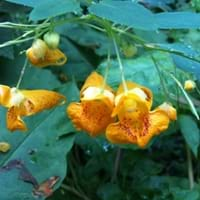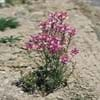Life Span
Annual
Perennial
Type
Fern, Succulent
Flowering Plants, Fruits, Trees
Origin
Africa, Canada, North America, United States
Anatolia, Asia, Europe, Iran, Maghreb, Morocco, Norway, The Hiamalayas
Types
impatiens balsaminak, impatiens hawkeri
Flowering Cherries, Sour Cherries, Sand Cherries, Sweet Cherries, Capulin Cherries
Habitat
Grassland, River side
Forest edges, Wild, Woods
USDA Hardiness Zone
2-11
4-8
AHS Heat Zone
12 - 1
10-1
Sunset Zone
Not Available
4, 5, 6, 7, 15, 16, 17
Habit
Upright/Erect
Upright/Erect
Flower Color
Yellow, Orange
White
Flower Color Modifier
Bicolor
Not Available
Leaf Color in Spring
Green
Dark Green
Leaf Color in Summer
Green
Orange
Leaf Color in Fall
Green
Orange
Leaf Color in Winter
Light Green
Orange
Leaf Shape
Elliptic, toothed
Oblong
Plant Season
Summer, Fall
Spring, Summer
Sunlight
Partial Sun, Partial shade
Full Sun, Partial shade
Type of Soil
Loam, Sand
Loamy, Well drained
The pH of Soil
Acidic, Neutral
Slightly Acidic
Soil Drainage
Average
Average
Bloom Time
Summer, Late Summer, Early Fall
Early Spring, Spring
Tolerances
Pollution
Heat And Humidity, Not Available
Where to Plant?
Ground
Ground
How to Plant?
Stem Planting, Transplanting
Grafting, Seedlings, Transplanting
Plant Maintenance
Low
Medium
Watering Requirements
Needs less watering
Never Over-water, Over-watering can cause leaf problems or root diseases, Prefer drip-irrigation instead of Over-head watering, Water twice a day in the initial period
In Summer
Moderate
Lots of watering
In Spring
Moderate
Moderate
In Winter
Average Water
Average Water
Soil pH
Acidic
Slightly Acidic
Soil Type
Clay
Loamy, Well drained
Soil Drainage Capacity
Clay, Moist
Average
Sun Exposure
Bright direct sunlight
Full Sun, Partial shade
Pruning
Prune lower leaves, Prune ocassionally
Don't prune in the fall, Prune if you want to improve plant shape, Prune in late winter, Remove dead or diseased plant parts, Remove deadheads
Fertilizers
Fertilize only when soil is poor
All-Purpose Liquid Fertilizer
Pests and Diseases
Bacteria wilt, Downy mildew, Drought
Aphids, Bacterial Canker, Black Knot, Brown Rot, Caterpillars
Plant Tolerance
Drought, Dry soil
Drought
Flower Petal Number
Single
Not Available
Foliage Texture
Medium
Not Available
Foliage Sheen
Matte
Not Available
Attracts
Bees, Butterflies, Hummingbirds
Birds
Allergy
allergic conjunctivitis, Asthma, Runny nose
Swelling in the face
Aesthetic Uses
Cottage Garden
Showy Purposes
Beauty Benefits
Poison Ivy
Not Available
Edible Uses
Sometimes
Yes
Environmental Uses
soil erosion prevension on hill slopes
Air purification
Medicinal Uses
antimicrobial, treating poison ivy, Upset stomach
Arthritis, Gout, Kidney problems, Rheumatoid arthritis, Swelling
Part of Plant Used
Bark, Leaves
Flowers, Fruits
Other Uses
Can be made into a herbal tea
Wood is used for making furniture
Used As Indoor Plant
No
No
Used As Outdoor Plant
Yes
Yes
Garden Design
Cottage garden
Not Available
Botanical Name
IMPATIENS capensis
Prunus avium
Common Name
Jewelweed
Cherry Tree
In Hindi
Not Available
चेरी का पेड़
In German
Impatiens capensis
Kirschbaum
In French
Impatiente du Cap
Cerisier
In Spanish
Impatiens capensis
Cerezo
In Greek
Impatiens capensis
κερασιά
In Portuguese
Impatiens capensis
árvore de cereja
In Polish
Impatiens capensis
wiśniowe drzewo
In Latin
Impatiens capensis
Cherry
Phylum
Magnoliophyta
Magnoliophyta
Class
Magnoliopsida
Magnoliopsida
Family
Balsaminaceae
Rosaceae
Clade
Dicotyledonous
Angiosperms, Eudicots, Rosids
Tribe
Not Available
Not Available
Subfamily
Not Available
Not Available
Number of Species
Not Available
Difference Between Jewelweed and Cherry Tree
If you are confused whether Jewelweed or Cherry Tree are same, here are some features about those plants to help you choose better. Many people think that these two plants have the same characteristics, but one can see Jewelweed and Cherry Tree Information and learn more about it. Fertilizers required for proper growth of Jewelweed are Fertilize only when soil is poor, whereas for Cherry Tree fertilizers required are All-Purpose Liquid Fertilizer. Hence, one should know the basic difference between Jewelweed and Cherry Tree if you are planning to have them in your garden to enhance its beauty.
<
Flowering PlantsImportance of Jewelweed and Cherry Tree
Want to have the most appropriate plant for your garden? You might want to know the importance of Jewelweed and Cherry Tree. Basically, these two plants vary in many aspects. Compare Jewelweed and Cherry Tree as they differ in many characteristics such as their life, care, benefits, facts, etc. Every gardener must at least have the slightest clue about the plants he wants to plant in his garden. Compare their benefits, which differ in many ways like facts and uses. The medicinal use of Jewelweed is antimicrobial, treating poison ivy and Upset stomach whereas of Cherry Tree is Arthritis, Gout, Kidney problems, Rheumatoid arthritis and Swelling. Jewelweed has beauty benefits as follows: Poison Ivy while Cherry Tree has beauty benefits as follows: Poison Ivy.
Compare Facts of Jewelweed vs Cherry Tree
How to choose the best garden plant for your garden depending upon its facts? Here garden plant comparison will help you to solve this query. Compare the facts of Jewelweed vs Cherry Tree and know which one to choose. As garden plants have benefits and other uses, allergy is also a major drawback of plants for some people. Allergic reactions of Jewelweed are allergic conjunctivitis, Asthma and Runny nose whereas of Cherry Tree have Swelling in the face respectively. Having a fruit bearing plant in your garden can be a plus point of your garden. Jewelweed has no showy fruits and Cherry Tree has showy fruits. Also Jewelweed is not flowering and Cherry Tree is flowering. You can compare Jewelweed and Cherry Tree facts and facts of other plants too.





